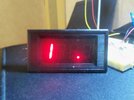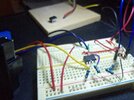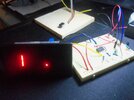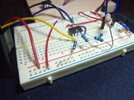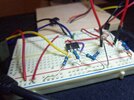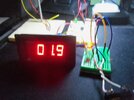You told the OP to use the design your friend posted (which uses a center-tapped transformer), then you said to use the schematic shown in the magazine that your friend referenced which uses batteries and two precision virtual ground chips since the ancient opamp used in the design is a TL071 since that opamp cannot have inputs at the same voltage as its negative supply so virtual ground must be used and the circuit shown goes over the top to create a virtual ground by using that chip. Then you said you have no idea what a virtual ground chip is and you have not offered an alternative design for our non-expert OP. Read the schematic and you'll hopefully be able to see what a virtual ground does. The video's creator never shows the "improved" schematic and neither have you.No, I've never suggested transformers - Michael used them, but the point is you need separate and unconnected supplies - two batteries would work just as well, or some kind of isolating inverter from one battery, to provide a separate isolated supply.
I think you need to understand the video you recommend and listen to the constraints the OP gives.

